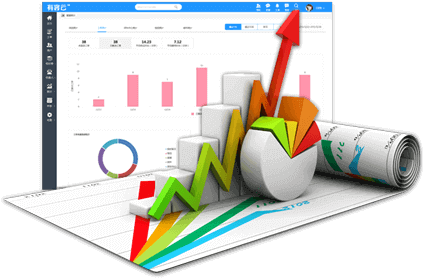 Whether you are a researcher, a business analyst, or a data enthusiast, making informed decisions based on data is crucial. However, not all data follows the normal distribution that many traditional statistical tests assume. When faced with non-normally distributed data or variables that violate certain assumptions, non-parametric tests come to the rescue. At Data Analysis Help.net, we understand the significance of running non-parametric tests, and we are here to help you navigate this complex terrain. By offering non-parametric statistical methods guidance, we are dedicated to assisting you achieve meaningful insights from your data. Non-parametric tests, unlike their parametric counterparts, do not require specific assumptions about the distribution of your data. They are versatile tools that can be applied in various scenarios, such as comparing medians, assessing correlations, or conducting hypothesis tests. These tests are particularly valuable when dealing with small sample sizes, skewed data, or ordinal variables. So, why should you consider non-parametric tests, and how can we assist you? Non-parametric tests provide robust and reliable results when assumptions are violated. They are less sensitive to outliers and can handle data that does not follow a normal distribution, making them invaluable in real-world situations where data rarely conforms to theoretical ideals. Our team of experienced statisticians and data analysts specializes in running non-parametric tests with precision and expertise. Whether you need to determine if there is a significant difference between two groups, assess the correlation between variables, or compare multiple groups, we have the knowledge and tools to guide you through the process. We can help you choose the most appropriate non-parametric test for your specific research or business question, ensure the data is properly prepared, conduct the analysis, and interpret the results accurately. When it comes to running non-parametric tests, our commitment to providing top-notch advanced non-parametric statistical analysis assistance is unwavering. We are your trusted partner in unlocking the insights hidden within your data, ensuring that you make informed decisions that drive success. So, if you find yourself grappling with non-normally distributed data or complex statistical challenges, remember that we are here to help you every step of the way.
Whether you are a researcher, a business analyst, or a data enthusiast, making informed decisions based on data is crucial. However, not all data follows the normal distribution that many traditional statistical tests assume. When faced with non-normally distributed data or variables that violate certain assumptions, non-parametric tests come to the rescue. At Data Analysis Help.net, we understand the significance of running non-parametric tests, and we are here to help you navigate this complex terrain. By offering non-parametric statistical methods guidance, we are dedicated to assisting you achieve meaningful insights from your data. Non-parametric tests, unlike their parametric counterparts, do not require specific assumptions about the distribution of your data. They are versatile tools that can be applied in various scenarios, such as comparing medians, assessing correlations, or conducting hypothesis tests. These tests are particularly valuable when dealing with small sample sizes, skewed data, or ordinal variables. So, why should you consider non-parametric tests, and how can we assist you? Non-parametric tests provide robust and reliable results when assumptions are violated. They are less sensitive to outliers and can handle data that does not follow a normal distribution, making them invaluable in real-world situations where data rarely conforms to theoretical ideals. Our team of experienced statisticians and data analysts specializes in running non-parametric tests with precision and expertise. Whether you need to determine if there is a significant difference between two groups, assess the correlation between variables, or compare multiple groups, we have the knowledge and tools to guide you through the process. We can help you choose the most appropriate non-parametric test for your specific research or business question, ensure the data is properly prepared, conduct the analysis, and interpret the results accurately. When it comes to running non-parametric tests, our commitment to providing top-notch advanced non-parametric statistical analysis assistance is unwavering. We are your trusted partner in unlocking the insights hidden within your data, ensuring that you make informed decisions that drive success. So, if you find yourself grappling with non-normally distributed data or complex statistical challenges, remember that we are here to help you every step of the way.
What makes it hard for students to run non-parametric tests?
Several factors contribute to the challenges students may face when attempting to run non-parametric tests. The complexity of these tests, compared to their parametric counterparts, can be intimidating. Non-parametric tests, such as the Wilcoxon signed-rank test or the Kruskal-Wallis test, often require a deeper understanding of their underlying assumptions and mathematical principles. Students may find it challenging to grasp these concepts, especially if they are still developing their statistical knowledge. Also, non-parametric tests typically involve larger sample sizes to achieve the same level of statistical power as parametric tests, which can make data collection and analysis more time-consuming and resource-intensive. This increased data volume may require students to invest more effort in data preparation and computation, further complicating the process. Moreover, the interpretation of non-parametric test results can be less intuitive than parametric tests. Students may struggle to communicate the findings effectively, as non-parametric tests often provide p-values and effect sizes that are less straightforward to explain or apply in real-world scenarios. Additionally, many statistical software packages primarily emphasize parametric tests, which are more widely used and discussed in statistical textbooks and coursework. This limited exposure to non-parametric tests may deter students from exploring these options or may result in a lack of proficiency in their application. In a nutshell, students may find non-parametric tests challenging due to their complexity, increased data requirements, less intuitive interpretation, and limited exposure in statistical education. To overcome these difficulties, students should seek additional resources, practice, and guidance to develop their skills and confidence in running non-parametric tests effectively.
The difference between parametric & non-parametric tests
Parametric and non-parametric tests are two broad categories of statistical tests used in data analysis to make inferences about populations or populations' parameters. These tests differ in terms of their assumptions, the types of data they can handle, and their appropriate use cases. That’s why students seek help with running a non-parametric test and parametric tests to understand them better.
- Parametric Tests: Parametric tests assume that the data follow a specific probability distribution, typically the normal distribution. These tests also assume that the data have homogeneity of variances, which means that the variance is roughly the same across different groups or conditions. These tests are equally suitable for continuous or numerical data. They rely on means and variances to make statistical inferences. Some common parametric tests include the t-test, analysis of variance (ANOVA), and linear regression. These tests are used to compare means or examine relationships between variables. Parametric tests tend to have more statistical power when their assumptions are met, making them more sensitive to detecting true effects in the data.
- Non-parametric Tests: Non-parametric tests make fewer distributional assumptions or none at all. They are often used when the data do not follow a normal distribution or when variance assumptions are violated. More so, these tests can be applied to various types of data, including nominal, ordinal, and continuous. They rely on the ranks or order of data points rather than their actual values. Common non-parametric tests include the Mann-Whitney U test (Wilcoxon rank-sum test), Kruskal-Wallis test, and the Chi-square test for independence. These tests are used for comparing medians, ranks, or frequencies. Non-parametric tests are generally less powerful than parametric tests when data meet the assumptions of parametric tests. However, they are more robust and applicable in situations where parametric assumptions are violated.
Selection between parametric and non-parametric tests depends on the nature of the data and the assumptions that can reasonably be met. Parametric tests are preferred when data are approximately normally distributed, and non-parametric tests are chosen when dealing with skewed or non-normally distributed data. It is essential to select the appropriate test to ensure the validity of the statistical analysis and the accuracy of the results in any given research or analysis scenario.
 Non-parametric tests are versatile and robust, making them invaluable tools in various research and business contexts. One of the key advantages of non-parametric tests is their ability to handle data that does not follow a normal distribution, which is a common scenario in real-world data sets. This flexibility ensures that analysts can apply these tests to a wide range of data types, making them a valuable addition to any data analytics toolkit. Additionally, non-parametric tests do not require strict assumptions about the data's underlying distribution, such as homogeneity of variances or linearity, which can be challenging to meet in some situations. This simplifies the testing process and allows analysts to focus on the data and its patterns rather than on meeting stringent assumptions. Furthermore, non-parametric tests are less sensitive to outliers compared to parametric tests, making them more robust when dealing with data that may contain extreme values or anomalies. This robustness enhances the reliability of the results obtained from non-parametric tests, particularly in situations where data quality is a concern. In the world of data analytics, having a strong understanding of non-parametric tests and how to apply them is essential for making informed decisions based on data. Whether you are analyzing consumer preferences, conducting medical research, or studying financial trends, non-parametric tests can provide valuable insights that may not be attainable through parametric approaches. Non-parametric tests are a valuable tool in the data analyst's arsenal, offering flexibility, robustness, and reliability when dealing with diverse and real-world data sets. By mastering these tests, data analysts can unlock a deeper understanding of the patterns and relationships within their data, ultimately leading to more informed and data-driven decision-making by seeking non-parametric data analysis assistance. Therefore, investing time and effort in learning and applying non-parametric tests is a worthwhile endeavor for anyone involved in the field of data analytics.
Non-parametric tests are versatile and robust, making them invaluable tools in various research and business contexts. One of the key advantages of non-parametric tests is their ability to handle data that does not follow a normal distribution, which is a common scenario in real-world data sets. This flexibility ensures that analysts can apply these tests to a wide range of data types, making them a valuable addition to any data analytics toolkit. Additionally, non-parametric tests do not require strict assumptions about the data's underlying distribution, such as homogeneity of variances or linearity, which can be challenging to meet in some situations. This simplifies the testing process and allows analysts to focus on the data and its patterns rather than on meeting stringent assumptions. Furthermore, non-parametric tests are less sensitive to outliers compared to parametric tests, making them more robust when dealing with data that may contain extreme values or anomalies. This robustness enhances the reliability of the results obtained from non-parametric tests, particularly in situations where data quality is a concern. In the world of data analytics, having a strong understanding of non-parametric tests and how to apply them is essential for making informed decisions based on data. Whether you are analyzing consumer preferences, conducting medical research, or studying financial trends, non-parametric tests can provide valuable insights that may not be attainable through parametric approaches. Non-parametric tests are a valuable tool in the data analyst's arsenal, offering flexibility, robustness, and reliability when dealing with diverse and real-world data sets. By mastering these tests, data analysts can unlock a deeper understanding of the patterns and relationships within their data, ultimately leading to more informed and data-driven decision-making by seeking non-parametric data analysis assistance. Therefore, investing time and effort in learning and applying non-parametric tests is a worthwhile endeavor for anyone involved in the field of data analytics.
Best Way to Run a Non-Parametric Test | Expert Data Analysts
 In today's data-driven world, making informed decisions based on accurate and reliable statistical analysis is paramount. Whether you are a researcher, a business professional, or a student, understanding how to effectively analyze data is a skill of utmost importance. Non-parametric tests are a crucial component of statistical analysis when dealing with non-normally distributed data or ordinal variables. However, running non-parametric tests can be complex and daunting, often requiring a deep understanding of statistical principles and software tools. We understand the challenges that individuals and organizations face when it comes to conducting non-parametric tests. We recognize that a misstep in this process can lead to incorrect conclusions, potentially affecting critical decisions. That's why we are here to offer step-by-step guide to running a non-parametric assessment, ensuring that your data analysis is not only accurate but also meaningful. Our team of experienced data analysts comprises experts in the field of statistics, with a wealth of knowledge and practical experience in conducting non-parametric tests. Whether you are dealing with data related to market research, healthcare, social sciences, or any other domain, we have the expertise to assist you. We understand the unique characteristics of non-parametric tests and can tailor our guidance to your specific needs. One of the primary reasons to choose us as your trusted partner in non-parametric testing is our commitment to accuracy and clarity. We believe in demystifying complex statistical concepts and making them accessible to individuals of all backgrounds. Our guidance is not limited to just running tests; we provide comprehensive explanations of the results, helping you interpret the findings in a meaningful way. We ensure that you not only know how to run a non-parametric test but also understand why it is the best approach for your data. We will cover the key steps involved in running these tests, the appropriate situations for their use, and the software tools that can simplify the process. We will help you on how to approach non-parametric testing, and you will be well-equipped to make informed decisions based on your data. We will help you understand efficient ways to run non-parametric statistical tests to empower you with the knowledge and skills to master the art of non-parametric testing, and together, we'll uncover the best way to unlock the insights hidden within your data.
In today's data-driven world, making informed decisions based on accurate and reliable statistical analysis is paramount. Whether you are a researcher, a business professional, or a student, understanding how to effectively analyze data is a skill of utmost importance. Non-parametric tests are a crucial component of statistical analysis when dealing with non-normally distributed data or ordinal variables. However, running non-parametric tests can be complex and daunting, often requiring a deep understanding of statistical principles and software tools. We understand the challenges that individuals and organizations face when it comes to conducting non-parametric tests. We recognize that a misstep in this process can lead to incorrect conclusions, potentially affecting critical decisions. That's why we are here to offer step-by-step guide to running a non-parametric assessment, ensuring that your data analysis is not only accurate but also meaningful. Our team of experienced data analysts comprises experts in the field of statistics, with a wealth of knowledge and practical experience in conducting non-parametric tests. Whether you are dealing with data related to market research, healthcare, social sciences, or any other domain, we have the expertise to assist you. We understand the unique characteristics of non-parametric tests and can tailor our guidance to your specific needs. One of the primary reasons to choose us as your trusted partner in non-parametric testing is our commitment to accuracy and clarity. We believe in demystifying complex statistical concepts and making them accessible to individuals of all backgrounds. Our guidance is not limited to just running tests; we provide comprehensive explanations of the results, helping you interpret the findings in a meaningful way. We ensure that you not only know how to run a non-parametric test but also understand why it is the best approach for your data. We will cover the key steps involved in running these tests, the appropriate situations for their use, and the software tools that can simplify the process. We will help you on how to approach non-parametric testing, and you will be well-equipped to make informed decisions based on your data. We will help you understand efficient ways to run non-parametric statistical tests to empower you with the knowledge and skills to master the art of non-parametric testing, and together, we'll uncover the best way to unlock the insights hidden within your data.
How to use non-parametric tests to analyze research data
Non-parametric tests are valuable tools for analyzing research data when the underlying assumptions of parametric tests, such as normal distribution or homogeneity of variances, are not met or when dealing with categorical or ordinal data. To use non-parametric tests, start by selecting an appropriate test based on the nature of your data and research question. Common non-parametric tests include the Wilcoxon signed-rank test for paired samples, Mann-Whitney U test for independent samples, Kruskal-Wallis test for comparing multiple groups, and the Chi-squared test for categorical data. Also, collect and organize your data, ensuring that it is appropriately scaled or ranked. Then, apply the chosen non-parametric test to calculate the test statistic and obtain a p-value. If the p-value is below your chosen significance level, you can reject the null hypothesis and conclude that there is a significant difference or association in your data. Non-parametric tests are robust and versatile tools that can provide meaningful insights when parametric assumptions are violated or when working with non-numerical data types, making them a valuable addition to the researcher's analytical toolkit.
What are the Assumptions of nonparametric tests?
Non-parametric tests are statistical methods used when the assumptions of parametric tests, such as normal distribution and homogeneity of variances, are violated or when dealing with ordinal or nominal data. The assumption of independence is essential, meaning that the observations or data points must be independent of each other. This assumption is similar to parametric tests and is crucial to ensure that the observations are not influenced by one another. Also, non-parametric tests assume that the data is measured at the ordinal or nominal level. These tests are designed for data that do not meet the requirements of parametric tests, which assume interval or ratio level data. Therefore, non-parametric tests are particularly useful when working with categorical or ranked data. These tests assume that the data is not normally distributed. Unlike parametric tests like t-tests or ANOVA, non-parametric tests do not require the assumption of normality in the data distribution, making them robust in situations where data deviates from a normal distribution. Additionally, non-parametric tests do not rely on the assumption of homogeneity of variances, which is a common requirement for parametric tests like the t-test. Non-parametric tests are less sensitive to unequal variances, making them appropriate for data with heterogeneous variances. These tests are valuable when dealing with data that may not adhere to the assumptions of parametric tests, such as normality and homogeneity of variances. They are particularly suited for ordinal or nominal data and offer flexibility and robustness in a wide range of statistical applications.
How should you run non-parametric tests on data?
Non-parametric tests are statistical methods used when data does not meet the assumptions of normal distribution or have homogeneous variances required for parametric tests. Unlike parametric tests that rely on specific distributional assumptions, non-parametric tests make fewer assumptions about the underlying data distribution. Instead, they assess data based on the order or ranks of values. Common non-parametric tests include the Mann-Whitney U test, Wilcoxon signed-rank test, Kruskal-Wallis test, and Spearman's rank correlation. Non-parametric tests are robust and suitable for analyzing data with outliers or non-normally distributed variables, making them valuable tools in various research and analytical contexts. Non-parametric tests are a valuable tool in statistical analysis when your data does not meet the assumptions of parametric tests, such as normal distribution or homogeneity of variances. This is the best way to run a non-parametric test. Identify the appropriate non-parametric test for your research question and data type. Common non-parametric tests include the Wilcoxon rank-sum test (Mann-Whitney U test) for comparing two independent groups, the Kruskal-Wallis test for comparing multiple independent groups, and the Spearman rank correlation or Kendall's tau for assessing associations between variables. Also, collect and prepare your data, ensuring that it is in the correct format for the chosen test. Then, conduct the chosen test using statistical software or calculators. Interpret the results, paying attention to the p-value, which indicates the significance of your findings. If the p-value is less than your chosen alpha level (e.g., 0.05), you can reject the null hypothesis and conclude that there is a significant difference or association in your data. Ensure to report your results accurately, including effect size measures if applicable, to convey the practical significance of your findings to your audience. Remember that non-parametric tests are robust and versatile, making them suitable for various research scenarios where parametric assumptions are not met.
 Non-parametric tests offer a robust and flexible alternative, enabling analysts to draw meaningful conclusions from their data while avoiding the pitfalls associated with parametric assumptions. The way to run these tests involves a systematic and well-thought-out approach. Analysts must carefully select the appropriate non-parametric test based on the research question and the type of data they are dealing with. Common non-parametric tests include the Mann-Whitney U test, Wilcoxon signed-rank test, Kruskal-Wallis test, and Spearman's rank correlation, among others. Understanding the specific requirements and assumptions of each test is essential for accurate results. More so, data preparation is crucial. Analysts should clean and preprocess the data to ensure it meets the minimum requirements for the chosen test. This may involve handling missing values, outliers, and ensuring the data is properly scaled or transformed if necessary. It is essential to perform the non-parametric test correctly by following the prescribed steps and using appropriate software or statistical tools. This includes conducting the test, calculating test statistics, determining the p-value, and interpreting the results in the context of the research question. Additionally, it is advisable to report the results accurately and transparently, including effect sizes and confidence intervals when relevant. This helps provide a comprehensive understanding of the findings and their practical significance. Expert data analysts should always critically assess the limitations of non-parametric tests, by applying advanced strategies for non-parametric hypothesis testing. While they are robust in many scenarios, they may have less statistical power compared to parametric tests in certain situations. Therefore, analysts should consider the trade-offs and choose the most appropriate method for their specific research context. By following these steps, expert analysts can confidently analyze their non-normally distributed or heterogeneous data, ultimately leading to more accurate and reliable research outcomes.
Non-parametric tests offer a robust and flexible alternative, enabling analysts to draw meaningful conclusions from their data while avoiding the pitfalls associated with parametric assumptions. The way to run these tests involves a systematic and well-thought-out approach. Analysts must carefully select the appropriate non-parametric test based on the research question and the type of data they are dealing with. Common non-parametric tests include the Mann-Whitney U test, Wilcoxon signed-rank test, Kruskal-Wallis test, and Spearman's rank correlation, among others. Understanding the specific requirements and assumptions of each test is essential for accurate results. More so, data preparation is crucial. Analysts should clean and preprocess the data to ensure it meets the minimum requirements for the chosen test. This may involve handling missing values, outliers, and ensuring the data is properly scaled or transformed if necessary. It is essential to perform the non-parametric test correctly by following the prescribed steps and using appropriate software or statistical tools. This includes conducting the test, calculating test statistics, determining the p-value, and interpreting the results in the context of the research question. Additionally, it is advisable to report the results accurately and transparently, including effect sizes and confidence intervals when relevant. This helps provide a comprehensive understanding of the findings and their practical significance. Expert data analysts should always critically assess the limitations of non-parametric tests, by applying advanced strategies for non-parametric hypothesis testing. While they are robust in many scenarios, they may have less statistical power compared to parametric tests in certain situations. Therefore, analysts should consider the trade-offs and choose the most appropriate method for their specific research context. By following these steps, expert analysts can confidently analyze their non-normally distributed or heterogeneous data, ultimately leading to more accurate and reliable research outcomes.






 NB: Sometimes we need to first assess your work to quote accordingly. Equally we may highlight a service input review on your placed order to confirm if the paid amount is
NB: Sometimes we need to first assess your work to quote accordingly. Equally we may highlight a service input review on your placed order to confirm if the paid amount is
